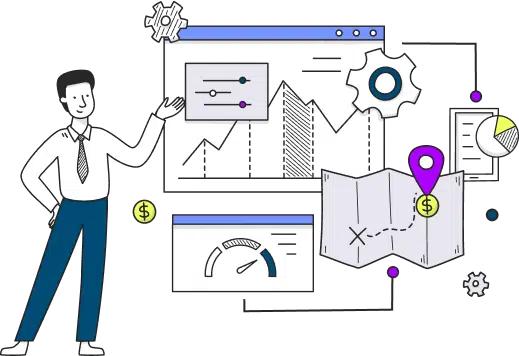Every minute counts when it comes to addressing needed repairs for small business owners. If your physical business location, equipment, or commercial vehicle ends up damaged or broken down, you need to address the issue quickly and efficiently. Because, as we all know, each day those assets are out of commission, your bottom line suffers even more. When your business is in desperate need of funds to cover costly repairs, it’s not unreasonable to consider using business financing to get things back up and running. There are, of course, more than a few financing options available to business owners to help them quickly address the issue at hand and get back to business. Let’s explore the most commonly considered financing options by business owners to tackle repairs.
Traditional Business Loans
Taking out a traditional business loan to cover business-critical repairs isn’t usually advised. While it may be tempting to use the lump sum that comes from most business loans to cover these costs, the time it can take to go through the application process and get the funds in-hand could be detrimental to your business. Traditional business loans, however, can be a great option if the repairs you need to make can wait – meaning, these repairs will not significantly impact revenue generation and daily operations.
Working Capital Loans
Typically provided by online lenders and non-bank financing companies, working capital loans have a much quicker turnaround than traditional business loans from banks and credit unions. With a simplified application and minimal documentation, working capital loans can usually get funds in your bank in as little as twenty-four hours for qualified borrowers. They do come with a higher cost than traditional business loans, but that cost should outweigh the loss in revenue you would experience waiting on approval for other financing options.
Line of Credit
Depending on interest rates and your overall credit capacity, using a line of credit to expedite repairs for your business can be a great option. Especially when you need to make these repairs quickly. While credit lines generally have higher interest rates than traditional loans, the line itself can also serve as a safety net for your business so that you don’t have to dip into your cash reserves during emergencies such as unexpected repairs.
Before using a line of credit to cover repairs to your business, consider whether you can pay off the full amount you’ll be taking out before your billing period closes. If the price of the repairs are high enough that it could take months or years to pay off, it may be better to look for other options with lower interest rates but longer-term agreements like traditional business loan or equipment financing.
Equipment Financing or Leasing
If a key piece of equipment breaks down suddenly, it’s more than possible that an equipment financing or leasing agreement could help get your business back on its feet quickly. By taking on an equipment financing or leasing agreement, however, you won’t be repairing the equipment, but instead replacing it. When expensive machinery breaks down fully – enough to justify a replacement – equipment financing allows you to quickly replace and potentially upgrade that equipment. Especially if the equipment is insured, financing an upgrade could even be a good move for your cash flow if it lets you get up and running more quickly.
Other benefits of replacing versus repairing with equipment financing is that qualified buyers can finance 100% of the cost of the equipment, the equipment itself acts as collateral for the financing, and the total cost of financing can be significantly more manageable than other
Revenue-based Financing
Revenue-based financing is typically used by already thriving and proven businesses looking to expedite growth and for the business owners to make bigger investments that they are confident will make even bigger returns in the future.
Though, not its intended purpose, revenue-based financing can quickly get capital into your hands to help cover critical repairs, BUT, it can be very expensive and should only be used to cover emergency repairs that would, essentially, shut your business down completely if not addressed where the loss of revenue significantly outweighs the cost of the financing.
Business Credit Cards
For the same reason that a business line of credit is a great lifeline in emergencies, the same can be true for credit cards. Business credit cards, however, generally have one of the highest interest rates when compared to most other financing products available today. Business credit cards, then, are best used for the most inexpensive and quickly repayable kinds of repairs.
Instead of cutting directly into your cash reserves every time a sudden repair comes up, quickly putting it on a credit card and paying it off before the end of the billing period can even be beneficial in the long run. Responsibly using your credit is great for your business credit score and, further, several business credit cards have cash back and points systems that reward regular use.
SBA Loans
Using an SBA 7(a) loan to handle a business repair is uncommon for one key reason: they take a long time to fully pay out. In some cases, SBA-backed 7(a) loans can take up to 90 days to be approved. And anyone who has applied for government assistance in the past can tell you that (no matter the purpose) you’ll be waiting a significant amount of time between your initial application and when you have cash in the bank.
While the SBA does offer loan programs that take less time than the 7(a), such as their express loans which can pay out within fourteen days. if your business can’t operate during that time you should consider other options that provide a quicker way to connect with capital. However, If your business can still operate before the repairs are made, it may be worth it to look more closely at the 7(a) and Express Loan programs.
Balance Interest and Urgency
The last thing you need when taking care of essential repairs is paying more than necessary. So, if you’re thinking about paying for a repair with financing, it’s essential that you balance the overall cost of that financing versus the cost of waiting for those repairs. Especially for infrastructure or equipment covered directly by insurance, the last thing you want to do is lose money by covering repairs through high-interest financing and paying more in the long-run.











